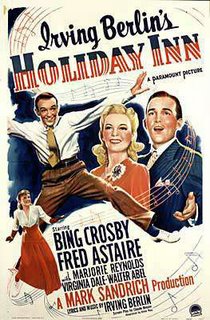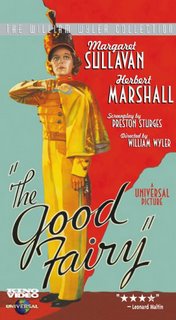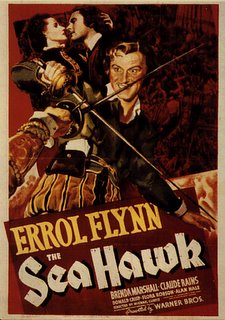Seven Brides for Seven Brothers
 If Arthur Freed was the king of MGM during the 1940's and 1950's, his closest competitor was Jack Cummings. Despite operating for most of his career in the shadow of Arthur Freed, who always was given the best actors and actresses, directors, technical crew and most importantly, money, Jack Cummings still managed to carve out an impressive career as essentially producer of MGM's "B" musicals. However, in a couple instances, he was able to secure enough talent that the finished product is so good, one might mistake it for a Freed unit production, a distinction which probably killed Jack Cummings. The pinnacle of the Cummings' unit was 1954's "Seven Brides for Seven Brothers". Starring Howard Keel and Jane Powell, two sizable MGM stars in their own right (each of whom had already starred in a lavish Freed unit production; Keel in "Show Boat" and Powell in "Royal Wedding"), directed by A-list director Stanley Donen, featuring choreography by rising Broadway star Michael Kidd, and even borrowing frequent Freed musical mainstays Saul Chaplin and Adolph Deutsch, "Seven Brides for Seven Brothers" was quite simply a collection of talent that Jack Cummings never usually had, and the result thus is not surprising. Despite being buried by MGM initially, after asking for a long location shoot where he could accurately capture the changing of the seasons, Stanley Donen saw his film's budget get slashed, the shoot allocated entirely to the backlot, and the money earmarked for his film transferred to "Brigadoon", produced by, of course, Arthur Freed. In spite of all of this, the talented group was able to combine their impressive skills and produce a tune filled, rousing musical that still entertains today.
If Arthur Freed was the king of MGM during the 1940's and 1950's, his closest competitor was Jack Cummings. Despite operating for most of his career in the shadow of Arthur Freed, who always was given the best actors and actresses, directors, technical crew and most importantly, money, Jack Cummings still managed to carve out an impressive career as essentially producer of MGM's "B" musicals. However, in a couple instances, he was able to secure enough talent that the finished product is so good, one might mistake it for a Freed unit production, a distinction which probably killed Jack Cummings. The pinnacle of the Cummings' unit was 1954's "Seven Brides for Seven Brothers". Starring Howard Keel and Jane Powell, two sizable MGM stars in their own right (each of whom had already starred in a lavish Freed unit production; Keel in "Show Boat" and Powell in "Royal Wedding"), directed by A-list director Stanley Donen, featuring choreography by rising Broadway star Michael Kidd, and even borrowing frequent Freed musical mainstays Saul Chaplin and Adolph Deutsch, "Seven Brides for Seven Brothers" was quite simply a collection of talent that Jack Cummings never usually had, and the result thus is not surprising. Despite being buried by MGM initially, after asking for a long location shoot where he could accurately capture the changing of the seasons, Stanley Donen saw his film's budget get slashed, the shoot allocated entirely to the backlot, and the money earmarked for his film transferred to "Brigadoon", produced by, of course, Arthur Freed. In spite of all of this, the talented group was able to combine their impressive skills and produce a tune filled, rousing musical that still entertains today.The film begins with mountain man Adam Pontipee confidently strolling into town looking for a wife. He does not know who that wife will be, but sings "Bless Your Beautiful Hide" to "her" anyway, an enormously catchy song among others written by Johnny Mercer and Gene de Paul for the film that helped Saul Chaplin and Adolph Deutsch win an Oscar for scoring. Not in town more than a few hours, he meets Milly, a beautiful young woman with no family who longs for a home of her own. She immediately falls for the ruggedly handsome Adam and his promise of their own farm. What he neglects to tell her is that he shares that farm with his six brothers, all of whom are dirty, brawling, obnoxious brutes. Milly is furious at Adam for not being honest with her, but also sad that she still does not have her vision of an idyllic home, instead she is a cook and maid to a household of unruly men. Acting outside the normal musical parameters though, Milly grows a backbone and banishes Adam from her bed, and demands that the brothers all shave, wash, and act civilized around the dinner table. They grudgingly accept her rules of the house and soon turn to her for advice on how to get the attention of girls. Adam laughs at how Milly is domesticating them, vowing that she will never be the boss of him. Milly teaches each of the brothers how to act around girls, and implores them to not get into a fight when they attend the barn raising, a big event in the territory at which all of the town's pretty young girls will be. The Pontipee clan arrives and each naturally pairs off with a girl, but each girl has their own suitor from town, and the two groups square off in a heated, spectacular dance sequence involving essentially everything but the kitchen sink. The barn raising sequence is justifiably famous in musical history for being one of the most prolonged scenes of dancing featuring an entire cast, similar to the ballet finale in "An American in Paris", and it still generates excitement to this day. Unfortunately for the brothers though, the town suitors soon turn the rivalry dirty and a large fight breaks out. The brothers are spurred on by Adam who relishes the opportunity for him and his brothers to get their hands dirty again and soon the brothers are forced to flee to the mountains, leaving their sweethearts behind.
Back in their isolated farm, the brothers all feel intense melancholy over not being able to see their girls again. Adam gives them the bright idea of sneaking into town and snatching them, similar to what the Romans did to the the "Sobbin' Women" (actually the Sabine women, and hardly as romantic as this movie makes it out to be; the Roman soldiers essentially kidnapped and raped the entire female population of a town under their control, but the basis is what inspires this film oddly enough). The brothers do just that, and for added measure they cause an avalanche, insuring that the girls' suitors will not be able to catch up with them until the following spring. However the girls' reaction is hardly what the brothers imagined, and Milly brings all of the girls into the cabin while banishing all of the brothers to the barn to sleep with the animals. She harbors particular anger towards Adam for giving the brothers the idea, and Adam responds with his typical bluster and exiles himself to the hunting cabin, buried even deeper in the wilderness for the entire winter. Soon though, the girls' anger turns to affection, as their true feelings for the brothers returns with the spring thaw. Even Milly softens her stance on Adam, brought on mostly by the fact that she is going to have a baby. Just before the pass clears Adam returns and begs Milly's forgiveness when he sees their daughter. He also convinces the brothers that if they ever want to have the girls for wives they must return them to town. Before they can do so the town posse arrives and hears the baby crying in the cabin. Assuming the worst (and this being the sexually pre historic times of the 1950's) the girls refuse to acknowledge who the baby belongs to, forcing their fathers to allow each to marry their respective choice of Pontipee. Despite the plot being rather silly, the film contains beautiful music, amazing dance sequences, and even though Stanley Donen did not get his wish to shoot on location, the sets (with a few exceptions) look wonderful. And it had to give Jack Cummings a certain degree of satisfaction to see his film, which MGM cut funds for remember, beat "Brigadoon", which received the budget surplus earmarked for "Seven Brides for Seven Brothers", pretty handily at the box office. Unfortunately for Cummings, that was probably the only time he could make that distinction, but for this film, the stars were aligned, and he was responsible for a wonderful film that trumped the legendary Arthur Freed.




